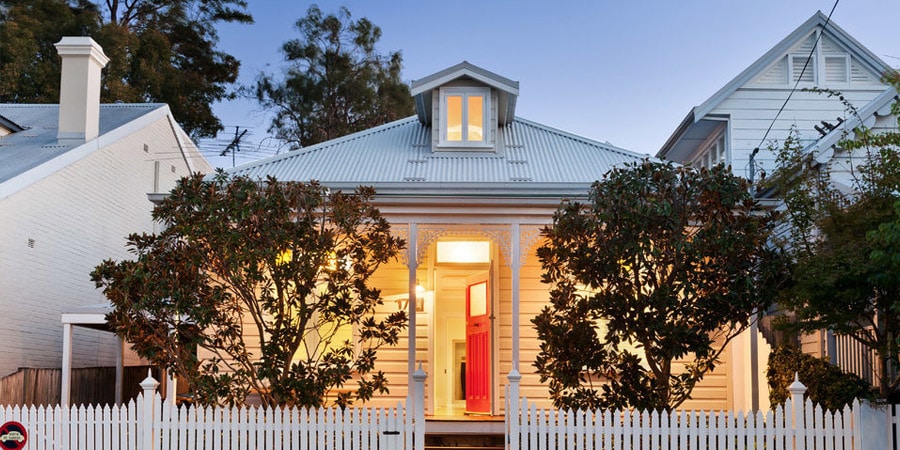Home > Home Loans > Owner-Occupier Home Loans
Owner-Occupier Home Loans
Get all the information you’ll need to compare mortgages and find the most cost-effective owner-occupier home loans.
Author
Savvy Editorial TeamFact checked
Choosing the right mortgage can be about more than just comparing home loan interest rates online and finding the cheapest one. Depending on how you intend to use your property, you’ll need to choose the right finance type. In this guide, we’ll examine how owner-occupier home loans work, what they cost, and look at the difference between mortgages for a primary residence and investor home loans.
What are owner-occupier home loans and how do they work?
In the most basic terms, an owner-occupier home loan – also called a mortgage – is a sum advanced to you by a finance provider for the purpose of buying a property that you intend to live in rather than rent out. Your home forms the security for the loan, and that’s why home loan interest rates are relatively low.
Most home loans run for between 25 and 30 years, but you can find lenders who offer shorter terms. Borrowers make weekly, fortnightly or, most commonly, monthly repayments until the loan is fully repaid. Part of each payment consists of some of the loan principal (what you borrowed) and some interest, which is based on several different factors associated with how much it costs a loan provider to lend you money.
You must reside at the property to use an owner-occupier home loan. If you intend to buy a house or apartment as an investment or to make money from rental income, you’ll need to consider investor home loans instead. Owner-occupier interest rates are more favourable than investor rates because lenders view these properties as lower-risk.
What’s the difference between investor home loans and owner-occupier home loans?
Not all home loans are the same. Here’s how investor loans and owner-occupier mortgages differ:
- Interest Rates and fees: Owner-occupier loans generally come with lower interest rates and cheaper fees than investor loans. Lenders see investments as posing a higher risk than primary residences, so you’ll pay less with an owner-occupier mortgage.
- Qualification Requirements: It’s far easier to qualify for an owner-occupier home loan than an investor loan, and you get more scope to use a smaller deposit, too.
Tax: Owner-occupiers don’t need to pay land tax or capital gains tax like investors do. That means any increase in value during your ownership won’t result in a bill from the ATO.
How do I compare owner-occupier home loans?
The cost of any home loan is based on different elements. You’ll pay an interest rate that relates to your borrowing history and your current status.
When you compare owner-occupier home loans on Savvy, you’ll see two rates. One is the interest rate, but the other is what’s known as a comparison rate. These comparison rates include additional account and setup fees and then display them as a percentage.
It’s not just a case of home loan interest rates and fees; buyers need to know they’ve allowed for the right options, too. When you compare owner-occupier home loans, it’s essential to prioritise any features you’re likely to need or benefit from – such as redraw facilities, offset accounts, and the ability to access a line of credit.
You’ll also need to consider how you want to handle repayments and interest. Some homebuyers may benefit from fixed-interest home loan rates while others will prefer variable-rate mortgage repayments – so they can access features that a fixed interest rate prevents. If you need a combination of the two, you could opt for a split-rate mortgage.
What fees should I look out for when comparing owner-occupier home loans?
As we’ve heard, home loans come with fees, so it’s wise to know your way around them:
- Most lenders charge a regular account fee to cover administration. When viewed monthly, this can seem like a relatively small amount (Usually between $5 and $20) but remember it relates to a 25 or 30-year term, so it’s worth trying to find the lowest option. $20 each month for 25-years is $6,000 while $5 is just $1,500.
- Application fees are common and cover the cost of setting up your home loan. Expect to pay somewhere between $150 and $700 – although, lenders vary.
- Discharge fees apply if you pay off your loan early. These fees can be around $300 – $500.
- If you use a redraw facility, the lender may also charge you each time. Fees of $50 and upwards are typical.
Your home loan options
Making your first big step towards buying a home? It's crucial to be across your mortgage options as a first homebuyer.
Opting for a variable interest rate on your home loan means it'll fluctuate as the market moves throughout your repayment term.
On the other hand, fixing your rate locks it in for a pre-defined period. This can bring with it greater certainty around your budget.
It's important not to set and forget when it comes to your home loan. If you find a more competitive offer, it may be worth refinancing.
If you're looking to build a new house, construction loans are specifically designed to cater to the different needs associated with doing so.
A guarantor essentially acts as a safety net for your lender, as they sign onto your loan to agree to pay it off should you become unable to do so.
Purchasing a property as an investment brings with it different specifications from a lender. It's crucial to know what your options are.
Businesses big or small may wish to purchase a property for commercial purposes, which are also different from a standard loan.
Your home loan may give you an interest-only option, which allows you to exclusively pay interest on your loan for a set period.
Just because your finances may be slightly more complicated as a self-employed individual doesn't mean you can't take out a home loan.
Some lenders may allow you to apply for a home loan with alternative documents, such as tax returns, BAS and ABN registration.
There are several options for purchasing a property without a cash deposit, such as equity in another property if you or your guarantor own one.
Why compare home loans with Savvy?
100% free
You don't have to pay a cent to compare home loans with us, enabling you to do so at any time.
Paperless quote process
You can fill out a simple online quote via our form without having to worry about sorting through heaps of paperwork.
Trusted lenders
With a panel of reputable mortgage lenders behind us, you can rest assured you'll be comparing high-quality options.
Your frequently asked questions about owner-occupier home loans
You’ll need to use it as your primary residence for at least a year before you consider moving on and renting it to a tenant. Typically, lenders will require you to occupy an owner occupier home within sixty days.
Pre-approval can be helpful if you plan to buy a property at auction or if you’d prefer to have a budget set in stone before you view houses. Lenders will grant you pre-approval for owner occupier home loans after an initial assessment of your situation, earnings, and your current spending.
Yes – no matter your credit history, lenders will assess your home loan application in the same way. They’ll check your regular income and spending to determine what you can afford to repay. Your credit history is important to lenders because it’s an accurate record of your ability to handle loans and other forms of borrowing like credit cards. When that’s absent, it’s not so much a negative as an unknown factor for loan providers. If you’re short on past borrowing, you can use rental history and receipts to demonstrate your ability to handle your finances. If you have a long-term, genuine history of saving money, that will also be a very positive sign to loan providers that you’re a safe bet.
Yes – you'll need a specialist loan to buy vacant land and then build a home from scratch. Owner-occupier home loans are designed to be used for existing homes but the short answer is yes, you can get an owner-occupier land loan.
Yes – depending on the mortgage you choose, you can use specific features to fund an extension or renovation. You’ll need to plan ahead and examine your options if you think you may start a family down the line or just if your new home has great potential for modernisation.
Unfortunately, no; stamp duty usually gets paid in cash at the end of the conveyancing process, so you’ll need to budget for it. It’s a good idea to allow around 5% of your new home’s purchase price for upfront costs like stamp duty and transfer fees. Use Savvy's Stamp Duty Calculator to find out how much stamp duty you may have to pay.
You can. These days, so many Australians work for themselves that you can apply for an owner-occupier home loan or even an investment loan when you’re a contractor or self-employed. As long as your income is stable and comfortably covers the cost of a mortgage plus your regular living expenses, you’ll be able qualify for a self-employed home loan. Depending on how much you earn and the documents at your disposal, you may need to consider lenders who offer low doc mortgage options.










